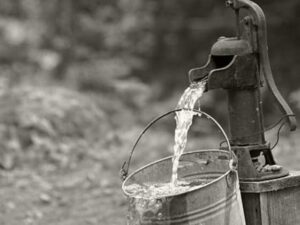
In rural areas, composting is a traditional practice, which continues, despite the increasing use of chemical fertilizers. In an urban environment, initially (for example, in Lyon at the end of the eighteenth century), it was not uncommon for market gardeners from the surrounding areas to come and collect the garbage themselves, mostly made of fermentable organic matter, in provide transport and use. However, various factors, including urban growth, the development of the public collection, and the change in the composition of household waste, have gradually reduced this practice.
The alternative then consisted of building composting factories. In Europe, it was in Italy in particular that the first so-called “ artificial fermentation in closed cells ” factories was born and developed; the challenge was to speed up the natural composting process. The increasing share of non-fermentable materials has, however, made it necessary, also, to sort or screen waste, to limit “ refusal of composting.” junk removal melbourne fl Composting and classifying costs, as well as transportation costs, the poor quality of the composts produced, the seasonality of demand, and increasing competition from chemical fertilizers, have led to a decline in composting.

In Indonesia:
In this country, three large-scale composting plants were designed, with the support of foreign cooperation, during the 1970s: Added to this was competition, even if it was quantitatively limited, from waste pickers who screened old landfills to extract soil, bagged and sold to nurserymen or private individuals for gardening. If necessary, the land in question was enriched with manure bought at slaughterhouses. The operators of the Surabaya composting plant, in search of outlets, had in turn considered reorienting their production, to address this profile of buyers, but it was then necessary to carry out a fine sieving of the compost, pack it in bags and look for relatively large-scale marketing channels, which involved a cascade of intermediaries; the whole thing resulted in too high prices;
A variant, Lombardi-composting:
This variant is based on the role of certain earthworms. Earthworms have in common that they eat organic matter, but there are hundreds of species with specific ecological skills and tasks. We can thus distinguish:
The anoxic zones: these giant earthworms are plowmen, who dig fairly deep galleries and go up the earth taken in depth; their reproduction rate is quite limited;
Endogens: their size is variable, and their reproduction rate is often modest; their role is complementary to that of the anoxic;
Pigs: their size is modest; they live on the surface of organic accumulations, consume 50 to 100% of their weight every day and have a high rate of reproduction; this is mainly the case for the species commonly known as soil worm. An adult individual can produce up to a million descendants per year. It is this last category which interests.








